

Through the 1980s and into the early 1990s, the United States experienced dramatic and unprecedented reductions in casual drug use.
The number of Americans using illicit drugs plunged from 24.7 million in 1979 to 11.4 million in 1992. The socalled "casual" use of cocaine fell by 79 percent between 1985 and 1992, while monthly cocaine use fell 55 percent between 1988 and 1992 alone -- from 2.9 million to 1.3 million users.
On the surface, little appears to have changed since 1992. For the nation as a whole, drug use remains relatively flat. The vast majority of Americans still do not use illegal drugs.
Unfortunately, this appearance is dangerously misleading. Drug use has in fact experienced a dramatic resurgence among our youth, a disturbing trend that could quickly return the United States to the epidemic of drug use that characterized the decade of the 1970s.
Recent surveys, described in detail in this report, provide overwhelming evidence of a sharp and growing increase in drug use among young people:
Nor have recent increases been confined to marijuana. At least three surveys note increased use of inhalants and other drugs such as cocaine and LSD.
Drug use by young people is alarming by any standard, but especially so since teen drug use is at the root of hardcore drug use by adults. According to surveys by the Center on Addiction and Substance Abuse, 1217 year-olds who use marijuana are 85 times more likely to graduate to cocaine than those who abstain from marijuana. Fully 60 percent of adolescents who use marijuana before age 15 will later use cocaine. Conversely, those who reach age 21 without ever having used drugs almost never try them later in life.
Described another way, perhaps 820,000 of the new crop of youthful marijuana smokers will eventually try cocaine. Of these 820,000 who try cocaine, some 58,000 may end up as regular users and addicts.
The implications for public policy are clear. If such increases are allowed to continue for just two more years, America will be at risk of returning to the epidemic drug use of the 1970s. Should that happen, our ability to control health care costs, reform welfare, improve the academic performance of our school-age children, and defuse the projected "crime bomb" of youthful super-predator criminals, will all be seriously compromised.
With these thoughts in mind, I am pleased to present "Losing Ground Against Drugs: A Report on Increasing Illicit Drug Use and National Drug Policy" prepared at my direction by the majority staff of the United States Senate Committee on the Judiciary. This report examines trends in drug use and the Clinton Administration's sometimes uneven response to them, including the Administration's controversial policy of targeting chronic, hardcore drug users. The report also reviews the state of trends in use and availability. And, finally, it evaluates the performance over the past three years of our nation's criminal justice and interdiction systems.
The report finds federal law enforcement under severe strain just as the technical sophistication of drug trafficking syndicates is reaching new heights. It finds that the Administration's supply reduction policy is in utter disarray, with a 53 percent drop in our ability to interdict and push back drug shipments in the transit zone. The report also finds increases in the purity of drugs and the number of drug-related emergency room admissions of hardcore users.
Federal drug policy is at a crossroads. Ineffectual leadership and failed federal policies have combined with ambiguous cultural messages to generate changing attitudes among our young people and sharp increases in youthful drug use.
The American people recognize these problems and are increasingly concerned: A Gallup poll released December 12,1995 shows that 94 percent of Americans view illegal drug use as either a "crisis" or a "very serious problem." Their concern, which I share, underscores the danger of compromising our struggle against the drug trade. I look forward to addressing the issues raised in this report in future hearings of the United States Senate Committee on the Judiciary.
Orrin G. HatchFor its first eight months in office, the Clinton Administration's approach to the drug issue could best be described as benign neglect. Then, in September 1993, the Administration announced a new approach to drug policy, promising to "reinvent our drug control programs" and "move beyond ideological debates." The new Administration policy de-emphasized law enforcement and shifted away from interdiction, while promising dividends from treating hardcore drug users. (1)
Almost three years into the Administration, however, the results of its early neglect, and subsequent policy "reinvention," are in. Drug use is up -- dramatically so among young people. Promised reductions in hardcore use -- the centerpiece of the Administration strategy -- have failed to materialize. New money to expand the nation's treatment system has coincided with a projected decrease in treatment "slots." (2)
Law enforcement efforts, meanwhile, are not keeping pace with the kingpins who run the drug trade, whose resources and technical sophistication are increasing yearly. Prosecutorial efforts appear to have stumbled as well, with a 12 percent decline in prosecutions over just two years.
Presidentially ordered interdiction cuts appear to have resulted in an increased supply of drugs on American streets. Illicit drugs are now available in greater quantities, at higher purity, and at lower prices than ever before. The Administration's strategy for coping with these problems is predicated on a series of goals that one drug policy expert described as "merely an unprioritized list [that does little] to direct policy." (3)
Viewed together, these factors paint a disturbing picture of inattention to a serious and growing national threat.
A recent Carnegie Foundation report warns that:
Barely out of childhood, young people ages ten to fourteen are today experiencing more freedom, autonomy, and choice than ever at a time when they still need special nurturing, protection, and guidance. Without the sustained involvement of parents and other adults in safeguarding their welfare, young adolescents are at risk of harming themselves and others. (4)
Lately, an increasing part of the "harm" referred to in the Carnegie report has been taking the form of increased drug use: Over the past two years, almost every available indicator shows that youthful drug use has increased dramatically after years of consistent declines (see Figure A).
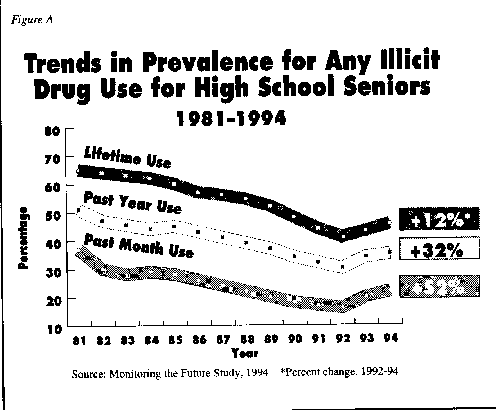
(Source: Monitoring the Future Study, 1994 * Percent change, 1992-94)
In September 1995, the Department of Health and Human Services released the National Household Survey on Drug Abuse, (Household Survey) which showed that marijuana use had increased by an average of 50 percent among young people.
Increases were especially pronounced in certain age groups. The category of "recent marijuana use" was up a staggering 200 percent among 1415 year-olds; among 12-13 year-olds, use was up 137 percent. (5)
Translated into raw numbers, this means that in 1994, the number of youthful, past-year marijuana users reached 2.9 million, compared to 1.6 million in 1992 (see Figure B). In other words, nearly 1.3 million more young people are smoking marijuana today than were doing so in 1992.
(Source: National Household Survey on Drug Abuse, September 1995)
Voluminous evidence now confirms the dangers of marijuana use. Marijuana impairs short-term memory, core motor functions, and the ability to concentrate. Used during pregnancy, it can lead to low-IQ babies.
Researchers have traced these recent increases to declining peer disapproval, which in turn is driven by fewer young people believing that drug use is harmful. University of Michigan Researcher Lloyd D. Johnston, who conducts an annual survey of drug use among 8th, 10th, and 12th graders, (6) has written that "'[p]eer norms appear to shift with changes in the perceived dangers of a drug'.... In the case of marijuana, the proportion of high-school seniors who disapproved of even trying" marijuana reached a high of 70 percent in 1992.(7) Yet when perceived risk began to drop, peer disapproval began to fall as well (from 70 percent in 1992 to 58 percent in 1994).
As peer disapproval fell, youthful drug use began a steep upward trajectory that continues to this day. As Figure C illustrates, past-month use of marijuana rose 110 percent for 8th graders, 95 percent for 10th graders, and 60 percent among 12th graders, between 1992 and 1994. Johnston predicts that "[i]f the softening of attitudes and peer norms continues unabated, we can expect to see continued increases in drug use among our children."
(Source: Monitoring the Future, December 1994 * Students reporting use within past 30 days)
In addition to surveying youthful drug use, the Household Survey also estimates the prevalence of adult use of a wide variety of illegal drugs, including marijuana, cocaine, and hallucinogens, as well as the nonmedical use of prescription drugs.
The Survey's annual estimate of overall drug use, which includes all age groups, showed little change in 1994, rising slightly to 12.2 million users, as compared to 11.7 million users the year before. The Survey is important because it measures drug use among the 98 percent of the population living in households. Its chief limitation is that it does not cover traditional high-use populations such as college students living in dormitories or homeless addicts not living in shelters.
One survey that does capture the traditional high-risk populations is the Drug Abuse Warning Network (DAWN), which monitors the number and pattern of drug-related emergencies and deaths in 21 major metropolitan areas across the country. DAWN is closely watched as a bellwether of hardcore use because so many emergency room cases involve addicts and heavy users.
In 1995, the DAWN results were scrutinized for possible vindication of the Clinton Administration's controversial focus on rehabilitating hardcore drug addicts. President Clinton announced the policy shift in a message to Congress, in which he wrote of "chang[ing] the focus of drug policy by targeting chronic, hardcore drug users." (8)
Unfortunately, the latest DAWN results contained nothing but bad news. (9) As Figure D illustrates, cocaine-related episodes hit their highest level in history. Marijuana-related episodes jumped 39 percent -- and are running at 155 percent above the 1990 level. Methamphetamine cases rose 256 percent over the 1991 level, as shown in Figure F, portending a potential epidemic of methamphetamine abuse as Mexican laboratories ensure a steady, cheap supply of the stimulant.
(Source: Drug Abuse Warning Network, November 1995)
Heroin-related episodes, which had jumped 66 percent in 1993, remain at the same high level as last year, although significant jumps were noted in specific metropolitan areas. In Baltimore, for example, the rate of emergency room admissions increased by 54 percent, from 259 to 398 per 100,000 population, between 1993 and 1994. (10)
According to the Department of Health and Human Services, (HHS) increases in emergency room admissions are being driven in part by drug overdoses, by the chronic effects of drug use, and by addicts seeking "detox." As shown in Figure E, a record number of emergency room admissions are for hardcore users, the very population that the Clinton Administration drug strategy promised to reduce.
(Source for both charts: Drug Abuse Warning Network, November 1995)
The Administration's focus on hardcore users has relied heavily on the application of federal drug treatment resources. For instance, the President's Drug Strategy states that "The Nation must utilize every opportunity to get chronic, hardcore drug users into treatment." (11)
Federal treatment budgets have enjoyed consistent support over the years. In fact, whereas interdiction spending today is well below the level of five years ago, federal treatment spending increased in every year between 1982 and 1995. (12) Paradoxically, these large budget increases have not led to a concomitant expansion in treatment capacity, which has remained almost flat since 1989. (13) All the signs are that the treatment bureaucracy is not making efficient use of federal resources, yet there is no indication that the Administration has come to grips with this problem.
(Source: Drug Abuse Warning Network, November 1995)
(Source: DEA and ABT Associates Purchases of 5 oz or less.)
The price and purity of illegal drugs on the street is an important, if imprecise, indicator of the availability of drugs. As Figure G illustrates, current price/purity data show cocaine prices at their lowest point since data collection began in 1981. Between February 1993 and February 1995, the retail price of a gram of cocaine fell from $172 to $137. Even larger drops were noted for heroin -- from $2,032 to $1,278 per gram over the same period (Figure H). Moreover, the purity of street-level heroin has reached record levels, while cocaine is at near-record purity levels. (14)
(Source: DEA and Abt Associates)
The data show that cheaper and purer drugs are getting through to American streets in greater quantities than ever before. Absent evidence of a reduction in drug demand, it is reasonable to conclude that this reflects a substantial increase in supply.
Reinforcing this conclusion is the converse example of sharp price increases due to major disruptions in supply. In 1990, for example, an intense law enforcement crackdown on the Medellin Cartel by the Colombian government, combined with concerted U.S. interdiction efforts, paralleled steep increases in the price of cocaine. As shown in Figure I, those price increases coincided with diminished evidence of cocaine use in the United States, including drug-related emergency room admissions and overdose deaths. (15)
(Source: Drug Abuse Warning Network and the System to Retrieve Information from Drug Evidence, 1986-1991. Note: The top graph excludes data from New York City, which were not available for all quarters.)
Hardcore users consume the bulk of illicit drugs in the United States, helping to fuel social pathologies and criminal violence, which has much of its roots in the consolidation and enforcement of drug sales territories.
In drug markets, violence is often a "means to achieve 'economic regulation and control' .... As one expert [has] explained..., '[i]n an underground economy, you can't sue. So you use violence to enforce your breaches of contract or perceived breaches of contract.'"
The data bear out this conclusion. Studies conducted between l978 and 1988 in Miami, New York City, and Washington, D.C., found that approximately one-quarter to one-half of homicides were drug-related. (16) A study of over 400 homicides in New York City in 1988 found that over half were linked to drugs or alcohol. (17)
A 1994 article in The Journal of the American Medical Association found that nearly three out of every l0 victims of homicide in New York City in the early 1990s had cocaine in their system at the time of death. Overall, murder victims in the city are 10 to 50 times more likely than members of the general population to have been cocaine users. (18)
Drug use often lies at the center of other social problems. Drug use, and the use of crack cocaine and heroin in particular, is associated with a higher risk of transmitting the AIDS virus. (19) Crack cocaine smokers exhibit more high-risk sexual behaviors, while intravenous heroin use has contributed to a significant and growing portion of AIDS sufferers. The situation has become so alarming that some epidemiologists have advocated needle exchange programs to limit the spread of HIV infection. Additionally, drug use sometimes leads to prostitution as a means of financing drug habits, thereby encouraging the spread of HIV and other sexually transmitted diseases. (20)
Drug use also has profound negative effects upon family structure, as illustrated in this description of the effects of cocaine use:
As users become cocaine dependent, their family and social lives disintegrate. They concentrate their energies on finding the next dose; employed users may spend all earnings on cocaine; a parent may leave children unsupervised for extended periods. (21)
Drug addiction destroys interfamilial relationships and often lies at the heart of the physical and emotional abuse that drug addicts visit on their spouse or children. The products of these devastated families, in turn, become the engine that drives future increases in the crime rate.
Drug use also fuels property crime. As drug users become more dependent, they become unable to hold down steady employment. As the habit devours the body, the addict often undertakes criminal activities in order to fund a growing addiction. Drug use and the resultant crime both burden the health care system with increased social costs for drug addicts and the victims of their crimes.
Beyond the severity of the social problems caused by drug use, compelling reasons exist to continue the federal role in drug law enforcement. As with the problems of illegal immigration and organized crime, where the paramount federal role is readily acknowledged, the drug crisis knows no borders. Drug sales and trafficking are interstate in nature, and securing the national borders from illegal drug imports is a role that constitutionally only the federal government can fulfill. (22) Much of the narcotics trade is an international enterprise, with cultivation, production, and manufacture typically taking place overseas. It is not an exaggeration to state that the drug trade encompasses one of the greatest internal, as well as external, threats facing our nation today.
Yet perhaps nowhere are the problems facing federal law enforcement demonstrated with more troubling clarity than in the state of the war on illegal drugs. Federal law enforcement is under enormous strain. Increasingly, those charged with enforcing federal laws are being assigned greater responsibility without a sufficient increase in the resources needed to fulfill that responsibility.
Unfortunately, efforts to stanch the supply of drugs also provide stark examples of the effect of misdeployment of federal funding and the impact of cutbacks to supply reduction enforcement resources.
Enforcement of the nation's drug laws, a core function of the federal government, has been neglected by the Clinton Administration. The Administration's inattention to drug law enforcement was reflected in its fiscal year 1995 budget, which would have cut a total of 621 drug enforcement positions from the Drug Enforcement Administration (DEA), Federal Bureau of Investigations (FBI), Immigration and Naturalization Service (INS), U.S. Customs Service, and U.S. Coast Guard. (23) Congress wisely restored a number of these proposed cuts, although the DEA still lost 227 agent positions between September 1992 and September 1995. (24)
Rather than arguing for cuts, the increasing power and sophistication of Colombian and Mexican trafficking organizations underscore the need for a robust, well-coordinated federal drug control effort.
A single recent case against the Cali drug mafia -- Operation FOXHUNT -- illustrates the magnitude of the challenge facing drug law enforcement in the 1990s. "FOXHUNT" is the code name given to a two-year DEA investigation of a major Cali Cartel transportation operation centered in Los Angeles. The investigation targeted two Colombian "transportation directors" responsible for the movement of multi-ton quantities of cocaine from main distribution points in Los Angeles to wholesale distributors in New York City, San Francisco, and Chicago. The Cali mafia's skillful compartmentalization meant that the two directors, or "cell heads," were not aware of the Cartel's other smuggling activities.
By the time the investigation had been concluded in October 1994, some 55 agencies and State and local police departments had been involved, six tons of cocaine had been seized, and more than 220 suspects had been indicted -- including the two cell heads.
Cases of this unprecedented magnitude have required investigators and U.S. Attorneys to develop new techniques to ensure interagency coordination and efficient case management. Because senior managers in Colombia and Mexico typically control even the most innocuous activities of their U.S.-based subordinates, cases like FOXHUNT have also relied heavily on penetrating trafficker communications.
Ready trafficker access to illegally altered cellular phones and digital pagers, as well the advent of new communications technologies such as digital cellular phones and Personal Communications Services (PCS) devices, has seriously complicated the task of federal law enforcement agencies as they seek to build cases and bring traffickers to justice. The Senate Committee on the Judiciary has received and is considering legislative proposals to address these and other law enforcement concerns.
The Administration's cuts to drug enforcement resources has coincided with a marked decline in drug prosecutions between 1992 and 1994. This decline in drug prosecutorial efforts is consistent with a general decrease in federal prosecutorial efforts over the past two years.
As detailed in Figure J, the number of individuals prosecuted for federal drug violations dropped from 25,033 in 1992 to 23,114 in 1993, and still lower to 21,905 in 1994 -- a 12 percent drop in just two years. (25)
(Source: Administrative Office of U.S. Courts. Total number of individuals prosecuted for drug law violations.)
A significant part of President George Bush's drug strategy, interdiction has been largely abandoned by the present Administration. On November 3, 1993, a Presidential statement proclaimed the Administration's new strategy, which referred to a "change of emphasis" (26) including the controlled shift of assets out of the socalled "transit zone." (27) During the same day, commenting on the new policy before a Congressional committee, the Director of the Office of National Drug Control Policy, (ONDCP) Lee P. Brown, testified that:
Holding on to programs because they make us look "tough" but accomplish little fails to be honest with the American people, who want a drug strategy that effectively responds to the realities of the drug problem America faces. (28)
Yet, as this report demonstrates, interdiction cuts over the past three years have seriously undermined the U.S. government's interdiction system. The lack of resources committed to interdiction efforts has translated directly to the arrival of drugs on American streets. Interdiction cutbacks have lowered traffickers' cost of doing business, apparently allowing the retail price of drugs to fall at the same time that the number of overdoses and emergency room admissions is increasing.
Because the source countries' productive capacity can always be increased to accommodate losses of product, repeated seizures accomplish little without law enforcement follow-up against the organization smuggling the drugs. That follow-up is not possible when interdiction assets are unable to respond to a particular smuggling event. In other words, cuts to interdiction capabilities have the potential to hurt the criminal justice "end-game" all the way from arrests of low-level drug smugglers to convictions of high-level drug kingpins.
Budget cuts have also seriously hurt the U.S. government's ability to seize and interdict drugs in the transit zone and at our borders. Transit zone seizures are down, street prices are down, and Cali traffickers are teaming up with Mexican drug barons to fly multi-ton loads of cocaine into Mexico aboard modified commercial jetliners. (29)
Between 1993 and the first six months of 1995, the transit zone "disruption rate" -- the ability of U.S. forces to seize or otherwise turn back drug shipments -- dropped 53 percent, from 435.1 kilograms per day to 205.2 kilograms, as shown in Figure K. (30) Over the course of a year, the lowered disruption rate means that as much as 84 metric tons (mt.) of additional cocaine and marijuana could be arriving unimpeded on the streets of the United States through the Eastern transit zone alone.
(Source: JIATF-EAST * Preliminary 1995 estimate)
Interdiction in the transit zone is accomplished primarily by three federal agencies: the Department of Defense (DoD), the U.S. Customs Service (USCS), and the U.S. Coast Guard (USCG). Responsibility for ensuring adequate drug interdiction funding for these agencies currently rests with Admiral Robert D. Kramek, United States Coast Guard. Appointed by the Director of ONDCP to serve as an ombudsman for the entire interdiction program, Admiral Kramek's role is to fight for money and interdiction resource allocations from participating agencies and to coordinate policy implementation. (31)
At a hearing before the National Security Subcommittee of the House Committee on Government Reform and Oversight on March 9, 1995, it was learned that Admiral Kramek had sent a memorandum to Lee P. Brown, Director of ONDCP, urging him to arrange a meeting with President Clinton. (32) The purpose of that proposed meeting was to inform the President that a consensus had developed among interdiction agency heads that it was necessary to return to Bush Administration levels of interdiction funding. Director Brown, apparently ignoring the memorandum, declined to arrange a meeting. He has since acknowledged that he failed to relay Admiral Kramek's concerns to the President because he was unconvinced that interdiction spending produced sufficient "bang for the buck." (33) Statistics, however, bear out what Admiral Kramek told Director Brown.
The overall proportion of the Customs Service budget devoted to drug control fell from 45.5 percent in fiscal year 1991, to a projected 33.9 percent in fiscal year 1996. (34) As Figure L illustrates, Clinton Administration cuts to the Customs Service interdiction budget coincided with a 70 percent decline in Customs-supported cocaine seizures in the transit-zone, from 35.4 mt. of cocaine in fiscal year 1993 to 10.8 mt. in fiscal year 1995. The number of trafficker aircraft seized by Customs in the transit zone fell from 37 to 10 during the same period. Customs Service transit zone flight hours, a rough indicator of the agency's focus on interdiction, fell from 9,844 in fiscal year 1993 to 6,870 in fiscal year 1995. (35) Total Customs Service flight hours are down as well, from 56,134 in fiscal year 1993 (36) to a projected 41,800 in fiscal year 1996. (37)
(Customs Transit Zone Flight Hours and Customs Transit Zone Supported Cocaine Seizures)
In budget terms, the Customs Service interdiction appropriation has been cut nearly 20 percent, from $588.8 million in fiscal year 1992 to $473.5 million in fiscal year 1995. (38) Among other things, these cuts forced the agency to mothball 22 fixed-wing aircraft and five sophisticated UH60 Black Hawk helicopters, vital tools in the interdiction effort. (39)
Department of Defense (DoD) interdiction assets have been cut back as well, a critical misjudgment, since lead agency responsibility for the aerial and maritime detection and monitoring of drug traffickers is reposed by statute within DoD. Between fiscal years 1992 and 1995, interdiction budgets (known as "optempo") were reduced by more than half, from $275.7 to $130.7 million. (40) As Figure M illustrates, DoD airborne detection and monitoring assets were cut back from 3,400 to 1,850 hours during the same period.
(Department of Defense Airborne D&M Assets and Coast Guard Aircraft Resource Hours)
The use of Navy vessels (measured in socalled "steaming days") was cut from 420 to 170 steaming days. The number of DoD ground-based radar sites increased from 11 to 18 between fiscal year 1992 and 1994, although a number of those sites are now slated for closure as the
military's Relocatable Over-the-Horizon Radar (ROTHR) system comes on line. Despite excessive interdiction cutbacks, DoD has been providing enhanced support in other areas, such as a program to provide intelligence and related support to drug law enforcement agencies targeting major overseas trafficking organizations.
The Committee has been unable to establish other critical aspects of DoD's contribution to drug supply reduction, such as the priority level assigned to the drug control mission by regional DoD Commanders-in-Chief, because Secretary of Defense William J. Perry has not responded to repeated oversight requests over an eight-month period.
Interdiction efforts of the United States Coast Guard have also been curtailed significantly over the past two years. The Coast Guard operating expense budget for drug missions fell from $449.2 million in fiscal year 1991 to a projected $314.2 million in fiscal year 1996. Cutter and aircraft resource hours are projected to fall 23 and 34 percent, respectively, over the same period. (41) The overall proportion of the Coast Guard budget devoted to drug control has fallen from 21 percent in fiscal year 1991, (42) to a projected eight percent in fiscal year 1996, as the Coast Guard focuses on other missions deemed to be of higher priority. (43)
Between fiscal years 1994 and 1995, the Coast Guard was forced to mothball the following drug interdiction assets: five 82-foot patrol boats, three surface effect ships, seven HU25 Falcon aircraft, and one medium-endurance cutter. It makes little sense to mothball expensive hardware, bought and paid for by the American taxpayer for the war on drugs, while narcotics are flowing virtually unimpeded into the country.
Not surprisingly, Coast Guard seizures are off: Cocaine seizures fell more than 45 percent since fiscal year 1989, from 7.2 mt. in fiscal year 1989 to 3.9 mt. for the first 11 months of fiscal year 1995, and remain 73 percent below the peak of fiscal year 1991, when they hit 14.8 mt. Marijuana seizures fell even more dramatically, from 134.2 mt. to 13 mt. during the same period. The number of Coast Guard vessel seizures fell 88 percent, from 152 in fiscal year 1989 to 19 in fiscal year 1995.
The tradeoff for cuts to transit zone interdiction forces was to have been a "new" concentration on institution-building and interdiction in the source countries of Latin America -- an idea recognized by some for its similarity to the Bush Administration's "Andean Strategy." (44) More than 18 months after unveiling the new strategy, however, ONDCP Director Brown acknowledged to a Congressional committee that the shift had not taken place. (45)
Foreign assistance funding to the Andean region has, in fact, been steadily declining. As Figure N illustrates, international counternarcotics funding to the Andean region fell abruptly under the Clinton Administration, from $334.9 million in fiscal year 1993 to $131.8 million in fiscal year 1995 -- a 60 percent drop, and significantly less than the $470.3 million appropriated in fiscal year 1992 under President Bush. (46) President Clinton's December 1993 Summit of Latin American leaders was notable for its focus on trade and "governance" issues -- and its almost complete lack of attention to the drug issue. A brief "action plan" on drugs contained little of note. (47)
(Source: National Drug Control Strategy: Budget Summary, February 1995)
This is unfortunate since a modest investment in the source countries of Latin America can have a major impact. In Peru, for example, President Alberto Fujimori has been providing drug dealers with a clear demonstration of his willingness to control the airspace over the coca-rich Upper Huallaga Valley. Acting on his orders, the Peruvian Air Force has shot down or otherwise disabled more than 20 trafficker aircraft since March 1, 1995, leading to the lowest level of detected flight activity in over three years.
President Fujimori's hard line on drugs actually prompted the Clinton Administration to cut Peru off from receiving radar tracking data, badly damaging bilateral relations in the process. U.S. government interdiction support for Peruvian counternarcotics programs has also been held up by a misguided foreign policy that continues to punish Peru for the April 5, 1992, suspension of democracy at the expense of our critical national interest in drug control.
Booming trade with Mexico has posed a major challenge to agents and inspectors of the United States Customs Service, who have the lead responsibility for preventing the cross-border importation of illegal drugs.
Roughly 70 percent of all cocaine enters the United States across the U.S.-Mexico border, according to DEA. Yet, according to an investigation conducted by the Los Angeles Times, (48) not a single kilogram of cocaine was confiscated from the more than two million trucks entering the country through three of the busiest points of entry along the Southwest border during fiscal year 1994. (49) Customs agents seized 802 kilograms of cocaine from all commercial border traffic during fiscal year 1994, compared with 3.5 mt. in fiscal year 1993 when commercial traffic was lighter.
The Customs Service has taken a number of steps to address the decline in seizures along the Southwest border. On February 25, 1995, Customs announced Operation "HARD LINE," an initiative to fortify ports of entry against socalled "port runners," car and truck drivers who smash through inspection stations with a cargo of illegal drugs. (50) Another HARD LINE initiative involved the application of new technology to the fight against smuggling.
Encouragingly, border seizures of cocaine increased somewhat with the advent of Operation HARD LINE, although overall Customs Service cocaine seizures for fiscal year 1995 remain 25 percent below the 1992 level. (51)
Preliminary indications suggest that the push to apply new inspection technology has not been as successful as hoped. The $3.2 million Otay Mesa backscatter X-ray scanner, the first of a number of building-size X-ray devices to be installed along the Southwest border, finished out its first year of operations without detecting a single gram of cocaine, despite scanning an average of 1,900 trailers and vans per day. (52)
The Clinton Administration is also allowing specialized counternarcotics units of the U.S. government to shift their focus away from drugs and toward a poorly understood phenomenon sometimes referred to as transnational organized crime. For instance, the U.S. government's drug-related foreign intelligence capability is concentrated within the Central Intelligence Agency's Counter-Narcotics Center (CNC). The CNC has now been renamed the Crime and Narcotics Center, reflecting a new focus on the collection of non-drug-related intelligence. The Department of State's Bureau of International Narcotics Matters has been reconstituted as the Bureau of International Narcotics and Law Enforcement Affairs and reportedly is attempting to inject itself into the coordination of the overseas activities of U.S. government law enforcement agencies. Some shift toward international organized crime may be inevitable, given reports of increased non-drug organized criminal activity. It remains to be seen, however, whether a shift in strategy toward the ill-defined threat of foreign criminal groups will protect the welfare, safety, and security of American citizens, or reduce the flow of illegal drugs.
In the area of money laundering, the Administration has allowed the Treasury Department's Financial Crimes Enforcement Network (FinCEN) to devote 50 percent of its time to non-drug investigations, up from 20 percent in previous years. (53) The President's fiscal year 1996 budget actually proposed to cut the drug-related portion of FinCEN's budget from $15.8 million in fiscal year 1995 to $11.1 million in fiscal year 1996.
The war on drugs can and should be waged effectively on the financial battlefield. The vigorous prosecution and punishment of money laundering operations and related crime, together with the seizure of the drug mafias' financial assets, effectively raises the costs of this deadly business. It also raises the street price of drugs, thereby reducing demand. Finally, it sends a powerful message to the drug lords -- we will seize your profits and strike you wherever we can. Consequently, Congress must monitor these developments to ensure that our nation's fight against the drug trade is effectively waged.
Federal drug policy is at a crossroads. Ambiguous cultural messages and changing attitudes among our young people have contributed to a sharp increase in the rate of youthful drug use. Increased use of heroin and methamphetamine by the population at large threatens to generate vast new addict populations. Cuts to enforcement programs have frustrated the efforts of line agents and police officers. By cutting back on drug interdiction, the federal government has permitted the importation of vast quantities of illegal drugs, helping to ensure the creation of a new generation of addicts and complicating the job of every federal, state, and local law enforcement officer trying to push back the tide of violent crime generated by the drug trade.
Federal law enforcement agencies are staffed by dedicated investigators, agents, prosecutors, and corrections personnel. But these professionals are being asked to do more and more with essentially the same resources, placing enormous strains on their agencies.
It is time for the Administration to adopt a balanced drug strategy. The strategy should target prevention and treatment resources to areas of need. But it must absolutely ensure that federal enforcement and interdiction systems receive the support they need in the fight to keep our nation free from the terror of violent crime and the other disastrous social consequences of illegal drug use. The recently passed appropriation for the Department of Justice increases the budgets of DEA and the FBI, and will close some of the gap between the level of funding and the level of need. Thoughtful, well-conceived policies must also support drug control agencies' mission. The American people deserve no less.
1. Office of National Drug Control Policy, Breaking the Cycle of Drug Abuse: 1993 Interim National Drug Control Strategy (September, 1993): pp. 1-3.
2. Includes treatment provided by Substance Abuse and Mental Health Administration and National Institute on Drug Abuse. Excludes other Federal agencies providing substance abuse treatment. Office of National Drug Control Policy, National Drug Control Strategy (February 1995): p 143.
3. Peter Reuter and Jonathan Caulkins, "Redefining the Goals of National Drug Policy: Recommendations from a Working Group," American Journal of Public Health, v. 85, No. 8 (August 1995): p. 1060.
4. Carnegie Council on Adolescent Development, Great Transitions: Preparing Adolescents for a New Century (October 1995): p. 9.
5. U.S. Department of Health and Human Services, Preliminary Estimates from the 1994 National Household Survey on Drug Abuse (September 1995): p. 61.
6. University of Michigan Institute for Social Research, Monitoring the Future (December 12, 1994): p. 4.
7. University of Michigan, Drug use continues to climb among American teenagers, as attitudes and beliefs about the dangers of drugs soften. UM survey says., press release (December 12, 1994): p. 4., copy on file with the Committee.
8. President Clinton's message accompanying the Office of National Drug Control Policy's National Drug Control Strategy (February 1994):
p. iii.
9. U.S. Department of Health and Human Services. Preliminary Estimates from the Drug Abuse Warning Network, Advance Report No. 11, (November 1995).
10. Supra note 9: p. 82.
11. Office of National Drug Control Policy, National Drug Control Strategy (February 1995): p. 38.
12. Fiscal year 1982 federal treatment spending was $505.6 million. Fiscal year 1995 treatment spending was $2.65 billion. Office of National Drug Control Policy, National Drug Control Strategy: Budget Summary (February 1995): p. 238.
13. According to the Department of Health and Human Services, (HHS) the number of "treatment equivalent slots" was 556,000 in 1989 and 596,000 in 1995. The number of slots is projected to decline in 1996, to 590,000. The HHS estimate includes treatment provided by Substance Abuse and Mental Health Administration and National Institute on Drug Abuse, but not other federal agencies providing substance abuse treatment. Office of National Drug Control Policy, National Drug Control Strategy (February 1995): p. 143.
14. U. S. Department of Justice, Drug Enforcement Administration and Abt Associates, Average Price and Purity of Cocaine in the United States, Average Price and Purity of Heroin in the United States (September 13,1995).
15. Similarly, in Detroit in 1988, disruption of the Chambers brothers' organization (that controlled many of Detroit's crack houses) resulted in a near-tripling of the street level price of cocaine in that city. Concurrently, there was also a reduction in indicia of cocaine use, such as emergency room incidents involving cocaine use. Office of National Drug Control Policy White Paper, Price and Purity of Cocaine: The Relationship to Emergency Room Visits, and to Drug Use Among Arrestees (October 1992).
16. U.S. Department of Justice, Drug Enforcement Administration, Mobile Enforcement Teams (January 1995): p. 2.
17. Ibid.
18. Kenneth Tardiff, Peter Marzuk, Andrew Leon, Charles Hirsch, Marina Stajic, Laura Portera, and Nancy Hartwell, "Homicide in New York City: Cocaine Use and Firearms," Journal of the American Medical Association v. 272, No. 1. (July 6, 1994): p. 43.
19. R. Booth, J. Watters, and D. Chitwood, "HIV Risk-Related Sex Behaviors among Injection Drug Users, Crack Smokers and Injection Drug Users Who Smoke Crack," American Journal of Public Health v. 83 (1993): p. 1144.
20. Ibid.
21. D. Allen and J. Jekel, Crack: The Broken Promise (New York: St. Martin's Press, 1991).
22. U.S. Const. Art. 1, Sec. 8, cl. 1 and 3 (commerce clause).
23. Office of National Drug Control Policy, National Drug Control Strategy: Budget Summary (February 1994): pp. 88, 93, 96, 140, 151 (includes positions funded under OCDE).
24. U.S. Department of Justice, Drug Enforcement Administration, Budget Memorandum (December 4, 1995).
25. Administrative Office of the U.S. Courts, L. Ralph Mecham, Judicial Business of U.S. Courts, Report of the Director of the Administrative Office of U.S. Courts (1994): p. A65.
26. The White House, Office of the Press Secretary, Statement by the Press Secretary, (November 3, 1993); pp. 23.
27. The transit zone includes the Caribbean, Gulf of Mexico, and parts of the Eastern Pacific.
28. House Foreign Affairs Committee, International Security, International Organizations, and Human Rights: International Aspects of President's Drug Strategy, 103rd Cong., 1st session, November 3, 1993.
29. Tim Golden, "Tons of Cocaine Reaching Mexico in Old Jets," New York Times (January 10, 1995): p. Al.
30. The "disruption rate" is the total amount of cocaine and marijuana that is seized, jettisoned, or "aborted" (i.e., taken back to the source country) as a result of interdiction or law enforcement presence. Data sheet from Joint Interagency Task Force-East.
31. The ombudsman's formal title is "United States Interdiction Coordinator" (USIC).
32. Memorandum from Admiral Kramek to ONDCP Director Brown (December 1, 1994). On file with the U.S. Senate Committee on the Judiciary.
33. Testimony of Lee P. Brown before the National Security Subcommittee of the House Committee on Government Reform and Oversight (March 9, 1995).
34. Excludes OCDE positions. Office of National Drug Control Policy, National Drug Control Strategy: Budget Summary (January l992): p. 172; Office of National Drug Control Policy, National Drug Control Strategy: Budget Summary (February 1995): p. 190.
35. Department of the Treasury, Bureau Critical Measures, Report of U.S. Department of the Treasury; U.S. Customs Service, U.S. Customs Air Program FY 1995 Statistics as Requested by the Senate Judiciary Committee (December 8, 1995): p. 2.
36. Office of National Drug Control Policy, National Drug Control Strategy: Budget Summary (January 1992): p. 153.
37. Office of National Drug Control Policy, National Drug Control Strategy: Budget Summary (February 1995): p. 194.
38. Ibid. p. 235.
39. Supra, note 35.
40. Fiscal year 1995 level is estimated. Department of Defense, Office of Drug Enforcement Policy and Support, Memorandum (June 6, 1995):
p. 2.
41. Coast Guard cutter "resource hours" for drug missions fell from 116,937 in FY 1991 to 39,825 in fiscal year 1994 before increasing to a projected level of 89,400 for fiscal year 1996. Aircraft resource hours fell from 23,701 in fiscal year 1991 to 6,331 in fiscal year 1994, before increasing to a projected level of 15,500 for fiscal year 1996. U.S. Coast Guard, Coast Guard Drug Budget Expenditures and Resource Hours (September 19, 1995) p. 2.
42. Supra, note 36: p. 157.
43. Supra, note 37: p. 175.
44. The source countries of Latin America are Bolivia, Colombia, and Peru. Office of National Drug Control Policy, National Drug Control Strategy: Reclaiming our Communities From Drugs and Violence (February 1994): p. 4.
45. Testimony of Lee P. Brown, Director, ONDCP, before the National Security Subcommittee of the House Committee on Government Reform and Oversight (March 9, 1995).
46. Includes the following funding categories: International Narcotics and Law Enforcement Affairs (INL), Foreign Military Financing (FMF), Economic Support Funds (ESF), Excess Defense Articles (EDA) and support provided under Sec. 506(a)(2) of the Foreign Assistance Act. The INL budget is primarily, but not entirely, devoted to Andean country programs. Office of National Drug Control Policy, National Drug Control Strategy: Budget Summary (February 1995): p. 235.
47. Summit of the Americas, Plan of Action, affirmed by participating Nations at Miami, Florida (December 11, 1994).
48. H.G. Reza, "Border Inspections Eased and Drug Seizures Plunge," Los Angeles Times (February 13, 1995): p. Al.
49. Laredo, Texas; El Paso, Texas; and Otay Mesa, California.
50. U.S. Customs Service, Fact Sheet on Operation Hard Line (March 15, 1995): p. 1.
51. Customs-wide cocaine seizures fell from 96.0 mt. in fiscal year 1992 to 72.1 mt. in fiscal year 1995.
52. Mark Fineman, "War on Drugs Goes to New Wavelengths: Customs Inspectors Use Costly Machine to X-Ray Suspect Vehicles at Mexican Border, But its Success Has Been Limited," Los Angeles Times (October 18, 1995): p. A12.
53. U.S. Department of the Treasury, Financial Crimes Enforcement Network, Budget Memorandum (March 29, 1995).